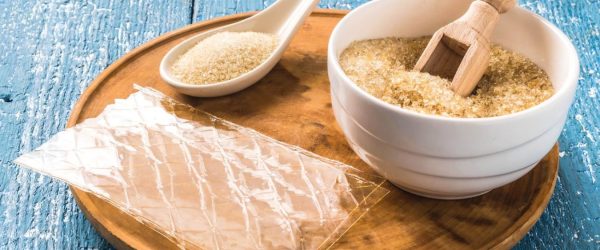
Ultra-fine pulverizing technology uses special pulverizing equipment to grind, impact, shear, etc. materials through certain processing procedures to pulverize materials with a particle size of 3 mm or more into fine particles with a particle size of 10 to 25 μm or less.
The advantages of ultrafine grinding technology are:
1. Maintain the bioactive components of the powder to the maximum extent, without generating local high temperatures, and the crushing speed is fast.
2. Increase the specific surface area, adsorption and solubility of the powder, which can save raw materials and improve utilization rate.
3. The operation is carried out in a fully enclosed state, which effectively prevents dust pollution in the air and ensures sterility and hygiene in the production process.
4. The powder particle size is very small, nutrients can be released without going through a long path, and can be easily adsorbed on the inner wall of the small intestine, accelerating the release rate of nutrients.
Commonly used equipment for ultrafine grinding
1. Air flow ultrafine grinding equipment
Airflow ultrafine pulverization uses the injection of gas through a pressure nozzle to produce violent impact, collision, friction and other effects to achieve ultrafine pulverization of materials. Compared with ordinary mechanical ultra-fine grinders, airflow grinders can grind products very finely, with a narrower particle size distribution range and more uniform particle size.
2. High-frequency vibration ultra-fine grinding equipment
High-frequency vibration ultra-fine grinding uses the impact, friction, shearing and other forces generated by high-frequency vibration of a spherical or rod-shaped grinding medium to achieve ultra-fine grinding of materials.
3. Rotating ball (rod) mill ultrafine grinding equipment
Rotating ball (rod) mill ultrafine grinding equipment mainly includes ball mills, rod mills, etc. The conventional ball mill has always been the main processing equipment in the fine grinding process. It mainly relies on impact for crushing.
4. Impact ultrafine grinding equipment
The impact ultrafine grinder uses a rotor that rotates at high speed around a horizontal or vertical axis to strongly impact, collide and shear the material. It is characterized by simple structure, large crushing capacity, good operating stability, low power consumption, and is suitable for crushing medium hard materials.
The final product of ultrafine grinding is ultrafine powder. As mentioned above, it has special physical and chemical properties that ordinary particles do not have, such as good solubility, dispersion, adsorption, chemical reactivity, etc. It is widely used in food, chemical industry, medicine, cosmetics, coatings and other fields. The following is its application in the food industry.
1. Fiber foods
Cellulose is called the “seventh nutrient” by the modern nutrition community. It can be used as a food additive or physiologically active substance. It is a functional food to prevent and treat modern obesity. Increasing the intake of dietary fiber is an important measure to improve human health. As we all know, wheat bran, oat hulls, corn husks, corn germ residue, soybean hulls, rice bran, beet pulp, sugarcane bagasse, etc. are rich in vitamins and trace elements. However, due to limitations of traditional technology, even if they are processed into powder, due to their fiber particle size It is large and affects the taste when eating, making it difficult for consumers to accept it. The use of ultra-micro technology for processing can significantly change the taste and adsorption properties of fiber. If used as food accessories, it can greatly enrich the nutrition of food. In addition, various peels and cores can be turned into food after ultrafine crushing.
2. Calcium-supplementing foods
Some inedible animal and plant raw materials, such as animal bones, eggshells, dried shrimps, etc., are rich in protein and fat, phospholipids, and phosphoproteins, which can promote the development of children’s brain nerves, strengthen the brain, and increase intelligence. Chondroitin can moisturize the skin, Anti-aging effect.
3. Beverage processing
When tea is brewed with boiling water, the human body does not fully absorb the nutrients in the tea. Some insoluble and water-insoluble vitamin A, carotene and some minerals remain in the tea residue. If the tea leaves are processed into ultrafine powder with a particle size of less than 5 microns, more nutrients in the tea leaves can be easily absorbed by the human stomach and intestines, and the tea leaves will be in the form of emulsions without precipitation when brewed with water.
4. Spices and condiments processing
As a new food processing method, ultrafine grinding technology can make spices and seasoning products (mainly fermented beans and solid products) processed by traditional techniques more high-quality.
5. Chocolate processing
The fine and smooth taste of chocolate requires that the particle size of the ingredients should not be larger than 25 μm. When the particle size is larger than 40 μm, the taste of chocolate will be obviously rough. The ultra-fine grinding technology can make most of the dry matter such as cocoa, sugar, and milk reach 20~30μm, providing the product with a delicate and smooth taste.
Ultrafine grinding processing technology has a wide range of applications, simple operating techniques, high product added value, and significant economic benefits. It is a new technology and new means in the food processing industry, especially for the improvement of traditional food processing techniques and formulas and the development of new products. The development of health food (functional food) will have a huge impetus.
